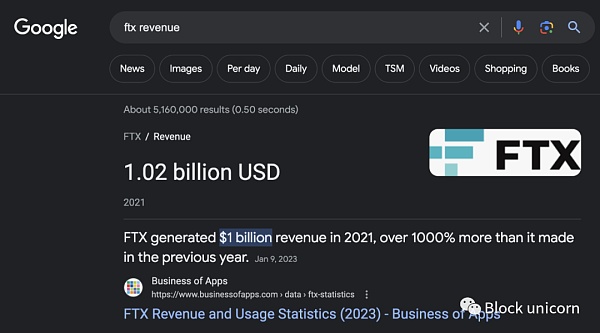Forbes: What effect does the Fed's interest rate cut to zero have on cryptocurrencies?
Author: Roger Huang
Translator: Nuclear Cola
Source: Blockchain Outpost
In the early morning of March 16, the Fed announced an emergency cut of 100 basis points to the level of 0-0.25% and launched a quantitative easing policy of US $ 700 billion. This means that the US currency has officially entered a liquidity trap.
- DeFi Weekly Selection | After 312 plunge, Maker enters self-help moment
- Research Report | Application of Industrial Blockchain in the New Crown Epidemic: Demand continues to expand, and applications are far from being met
- Fed throws "king bomb", cuts interest rate to 0, community: opportunity for bitcoin is here
The Fed stated that the new crown epidemic has caused social and economic damage to many countries, including the United States. The global financial environment has been significantly affected. This rate cut will help support the US economy, stabilize the job market, and maintain inflation targets.
U.S. plunges into liquidity crisis, with many countries lingering on the edge
What exactly is a "liquidity trap"? Paul Krugman sums it up in a classic sentence: "This is a special case, because the nominal interest rate is already close to or equal to zero, so conventional monetary policy is beginning to fail completely …" No doubt, the current situation in the United States is exactly In this way, many countries in the world have begun to linger on the edge of the trap.
For central banks such as the Federal Reserve, once the nominal interest rate approaches zero, any monetary policy they issue will be ineffective. In fact, they want to use negative interest rates to stimulate investment, but they are afraid of serious unpredictable consequences. At present, the central banks of several countries are planning to take risks and try to find out how much trouble negative interest rates will cause.
In response, the central bank must either sit idly by and wait for everything to fall into a trap, or come up with various unconventional monetary policies. For the Federal Reserve, quantitative easing and the direct addition of financial assets to the balance sheet are the two most familiar solutions; in contrast, the European Central Bank is actively studying the feasibility of negative interest rates. The two parties may take further interest rate cuts at any time, even if the corresponding assets do not exist in the balance sheet.
The current US federal funds target rate is between 1% and 1.25%, while the actual federal funds rate is about 1.1%. Since the unscheduled additional issuance caused by the 2008 financial crisis, the real interest rate of federal funds has not been able to reach the level originally set at 1.5% to 1.7% (at that time, the Dow Jones Index also set the largest single-day selling record to date) .
As a result, the Fed began to take other measures to provide liquidity to the market, including increasing the total amount of money in the market through repo and other operations. Although this type of operation is not much different from traditional open market currency operations, the aggressiveness of this measure is still the highest in any Federal Reserve intervention in recent years.
JPMorgan Chase has released forecasts that the Federal Reserve may reduce interest rates to the 0% to 0.25% range, the lowest level since 2015. In a word, this has become the final interest rate / monetary policy finalized by the Fed for the next stage. Earlier, the Fed has expressed its willingness to implement unplanned interest rate cuts and stated that they intend to take the initiative to control the signs of the spread of the crisis caused by the COVID-19 epidemic and market price fluctuations.
Unless the Fed can actively accept negative interest rates or other unconventional monetary policies as it did in 2008, a liquidity trap is bound to emerge. Maybe the difficult times after 2009 are coming again. The future inflation level will seriously affect the attitudes of individuals and enterprises towards reserve funds.
Having said that, we have defined the liquidity trap. So, what impact will all this have on cryptocurrencies?
Impact of liquidity crisis on cryptocurrencies
The first thing to emphasize is that the reason why Satoshi Nakamoto created Bitcoin was to consider the negative impact that brutal monetary policy may bring to people. When the Bitcoin Origin Block went online, the UK was launching a second round of comprehensive bailouts for domestic banks-although this fiscal policy is not extreme in itself, it has reflected the general flaws in the traditional banking system supported by the Central Bank. Since its birth, Bitcoin has become a pioneer in anti-monetary policy and a powerful weapon that people use to influence the impact of inflationary policies.
Bitcoin has a strict value creation cycle. Algorithms determine when new blocks can be created and set a block growth limit, thereby preventing people from issuing additional Bitcoins at will. Utilizing a decentralized mining and peer-to-peer network, the system itself no longer relies on centralized systems such as the central bank, thus completely overturning the market-and-policy hybrid economic structure established after the Second World War.
The new consensus proposed by Bitcoin has also received positive responses from various cryptocurrencies. Even if this consensus is not the fundamental requirement, most cryptocurrencies continue to follow the core principles proposed by Bitcoin.
After nearly a decade of rapid development, Bitcoin has now begun to become an institutional force; even more ironically, Dragon Slayers eventually turned into evil dragons. In many scenarios, Bitcoin is viewed as another portfolio option, even the "advanced" version of gold. Of course, no matter whether you are optimistic or faint, Bitcoin and other cryptocurrencies have become the necessary gateway to greater market power.
But it also brings greater unpredictability-so institutions and retail investors are pinning their hopes on the safest supportive forces in the wake of the financial crisis, namely government orders.
The reason why investors view the US dollar, government bonds, and government bonds as safe bonds is because they have the full support and trust of the current system. Because of this, cryptocurrencies have become typical "high-risk" assets in the eyes of short-term investors-not only do they not receive any government support, but they are facing increasing scrutiny pressure.
Therefore, in the short-term perspective, the price of cryptocurrencies may fluctuate significantly and gradually decline. But it is interesting to note that if the Fed does the same thing and re-issues financial assets through quantitative easing to fill its balance sheet, then the severe impact caused will eventually lead to another wave of soaring asset prices in cryptocurrencies.
But the most important result is not yet here. Truly visionary policy makers ignore price volatility in the short term and see it as a new financial instrument.
Obviously, combined with the response of the central banks of various countries, the options that the traditional financial system can provide have been basically exhausted, and the potential stability crisis has exceeded the scope of monetary policy control. This means we need to store value in a variety of ways: As a hedging vehicle, cryptocurrencies may even become a potential alternative to most existing financial instruments.
After all, the epidemic of the COVID-19 epidemic has forced many people to work from home, and it also highlights that the practice of using the value of currency storage in a single country often fails to cope with the global economic crisis. Therefore, the long-term development prospects and demand of cryptocurrencies should not be affected by short-term price fluctuations.
Instead, we might as well learn from the severe situation, seriously consider the reason for the birth of cryptocurrency, and then explore the possibility of using it as a new conventional value carrier.
On the basis of not affecting reading, the original article was slightly modified.
Original link: https://www.forbes.com/sites/rogerhuang/2020/03/15/the-fed-is-close-to-a-liquidity-trap-what-does-that-mean-for-cryptocurrencies / # 7ee87d367f16
We will continue to update Blocking; if you have any questions or suggestions, please contact us!
Was this article helpful?
93 out of 132 found this helpful
Related articles
- Babbitt Column | Should the long-term investment in the blockchain sector continue under the slump?
- Circle CEO: Stablecoin demand has increased significantly during this plunge, and blockchain-based currency infrastructure is working
- SheKnows: 34 trillion! Discover "blockchain opportunities" in new infrastructure
- Analysis: The market plunges "the scourge" of DeFi, which will be more resistant after the market is perfected
- Misunderstanding the blockchain, starting from the day of misunderstanding Satoshi Nakamoto
- Perspectives | Cryptoeconomics: Historical Opportunities in Crises
- What's wrong with Bitcoin? Andreas Antonopoulos gave the answer two months ago






